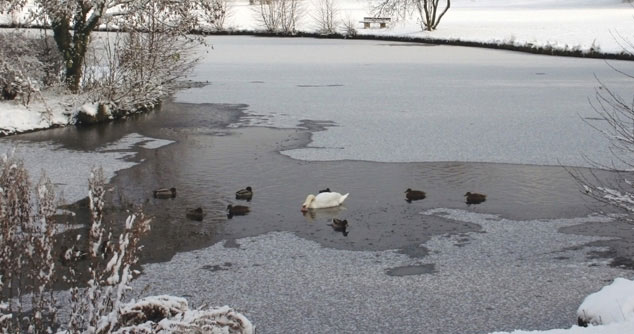What sort of pond filtration is required?
Ornamental ponds often need supplemental filtration to maintain proper water quality. Filtration involves two parts: the first step is mechanical. This step removes particles from the water like leaves, grass clippings, dead plant foliage, etc. Pond skimmers are by far the best mechanical pond filter we have seen yet. Biological filtration is the second stage and is especially important for ponds with fish. Biological filtration keeps the water healthy and clear. The filter media inside a bio-filter collects beneficial bacteria that cleans the water as it passes through the filter.
Sizing Your Filter
All pond filters are rated for maximum pond size or maximum GPM flow. To properly filter the pond, your filter needs to be able to filter half the pond volume per hour.
Example: A 1,000 gal. pond would need a 500 gal. per hour filter.
Filter Location
We recommend using an external biological filter. This filter can be located directly next to the pond or concealed by plants, rocks, or bushes away from the pond. Water is pumped from the pond through piping to the filter and then back to the pond. Our AquaFalls filters are ideal since they bury in the ground for easy concealment, require minimal cleaning, and provide an ideal base for your waterfall/stream.
Plants
Aquatic plants are an important part of the filter system. Plants absorb nutrients from the water thereby reducing the nutrient load in the pond, which helps your filters. Oxygenating plants are especially beneficial because they not only filter but also add oxygen to the water.
UV Sterilizers
Ultraviolet clarifiers (UVC) are a popular way to control pea soup-colored water. Pea soup green water is caused by an excess of free floating algae cells. UVCs destroy all living cells in the water as they pass through. If you are adding bacteria to your pond, you will want to shut off the UVC before adding the bacteria, then restart after 24 hours.

